IT's role is more critical than ever in a world that's increasingly dependent on digital. Organizations are under increasing pressure to stay competitive and create connected experiences. According to our report, IT projects are projected to grow by 40%; and 82% of businesses are now holding their IT teams accountable for delivering connected customer experiences. Research from Flexsim Brasil and third-party findings highlight some of the top trends facing CIOs, IT leaders, and organizations in their digital transformation journey.
TREND 1: THE DIGITAL-READY CULTURE
Consumers want consistent engagement with brands across their preferred channels. Seventy-three percent of shoppers use more than one channel during their shopping journey. Per Deloitte, seventy-five percent of consumers expect consistent interactions across all departments of a company. Eighty-six percent of consumers say they want the ability to move between channels when talking to a brand. Ninty-two percent of customers are satisfied using live chat services -- making it the support channel that leads to the highest customer satisfaction. And 78% of consumers use mobile devices to connect with brands for customer service -- the number jumps to 90% of Millennials. Organizations need to invest in new digital methods of customer service. Organizations need to invest in new digital methods of customer service.
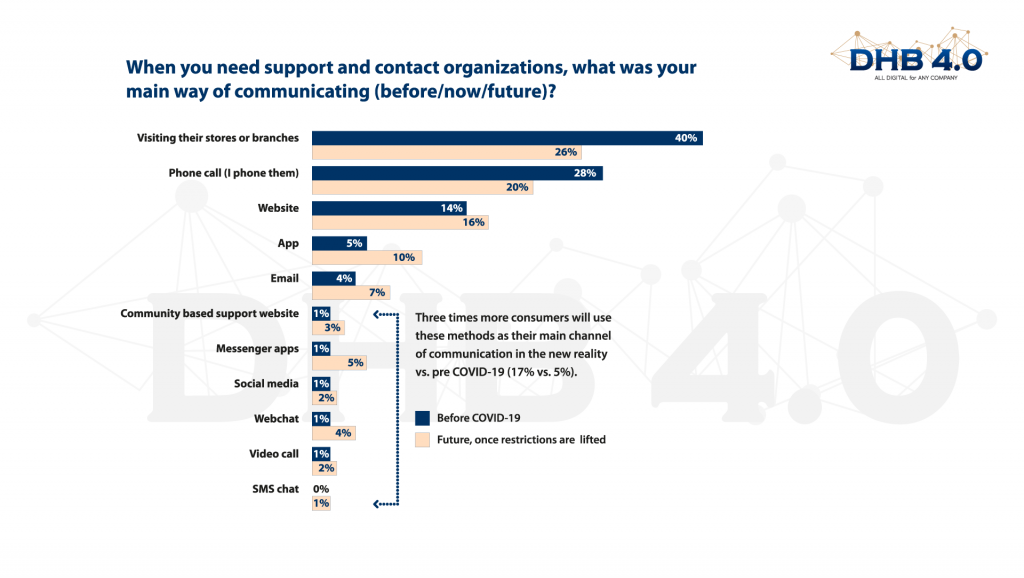
There is increased pressure on IT leaders to deliver on digital initiatives -- a 40% more increase in 2020. One of the biggest challenges to digital transformation efforts is integration. Eighty-nine percent of IT leaders report data silos are creating business challenges for their organizations' digital transformation initiatives. And 85% of IT leaders report integration challenges are hindering their digital transformation efforts. Organizations need to enable innovation beyond the four walls of IT -- this is a very important lesson for CIOs. There are no IT projects, there are only business projects. And the business will not wait for IT to deliver on its innovation roadmap and strategic initiatives. 2020 may be the start of the citizen developer revolution. The pandemic has accelerated all automation and digital transformation programs by several years. According to Gartner, by 2023, the number of active citizen developers at large enterprises will be at least four times the number of professional developers.
TREND 2: DEMOCRATIZATION OF INNOVATION
Research shows that Lines of business (LoBs) are participating in digital transformation with 68% of LoB users believe IT and LoBs should jointly drive digital transformation. In addition, 51% of LoB users are frustrated at the speed their organizations' IT department can deliver digital projects. Outside of IT, the top three business roles with integration needs include business analysts, data scientists, and customer support.
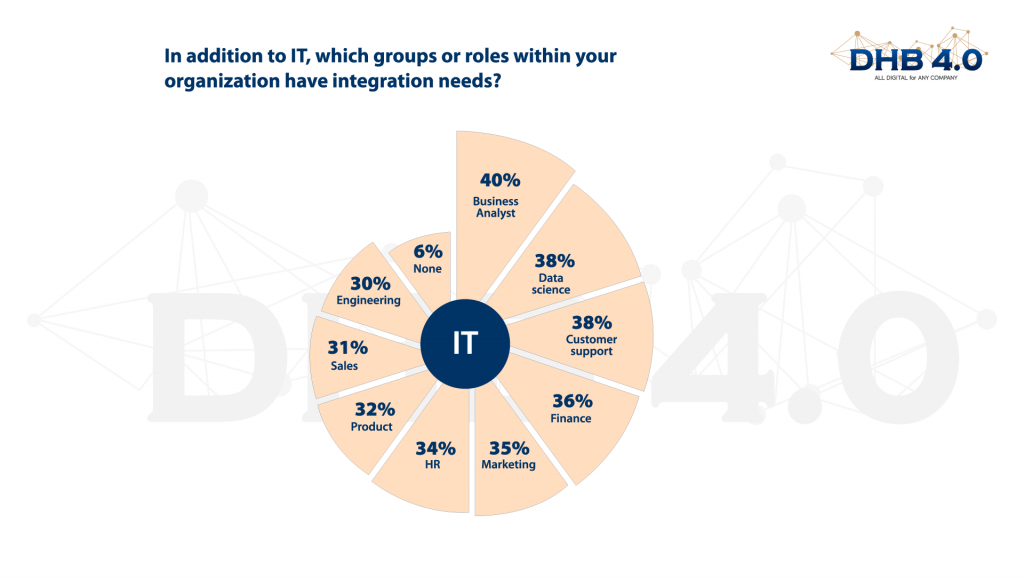
Integration needs are increasing across all business functions.
Enterprises will look to low code development tools to improve productivity. Per Garner, 75% of large enterprises will be using at least four low-code development tools for both IT application development and citizen development initiatives, by 2024. And 65%+ of application development activity will be as a result of low-code application development, by 2024. These trends are incredibly important for IT and CIOs -- enabling and increasing technology savviness across lines-of-business is a key priority. Citizen integrator tools will reach mainstream adoption in the next 2 to 5 years.
GARTNER Hype cycle for the digital workplace, 2020 Gartner
TREND 3: COMPOSABLE ENTERPRISE
Enterprises face application proliferation. There are around 8,000 apps in the marketing technology landscape alone. Fifty-two percent of organizations say that IT has generated the most business value by building reusable integration assets that save time and money on future projects.
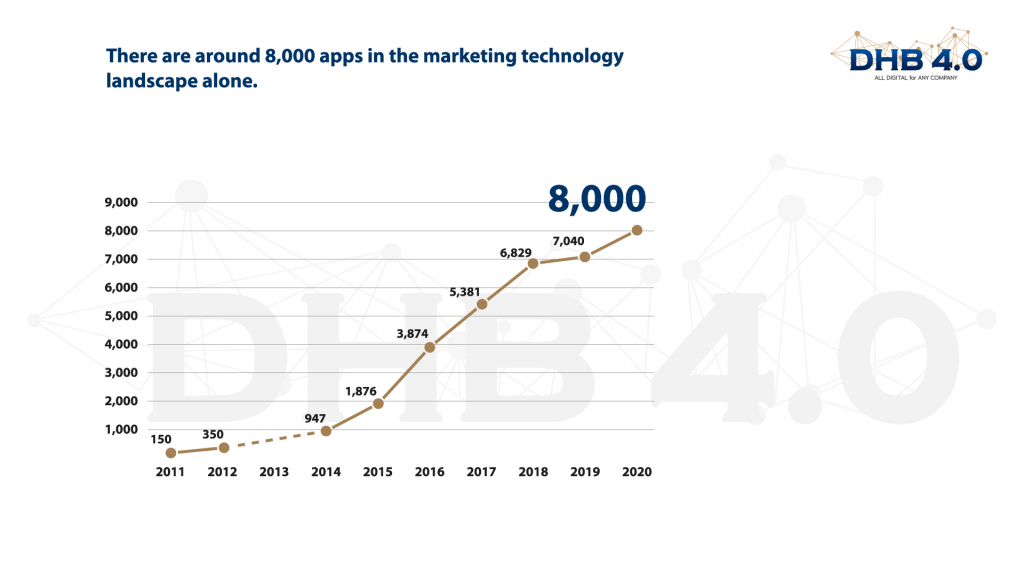
The marketing technology application landscape is around 14,000 apps in 2020.
In Gartner's Hype Cycle for Emerging Technologies, composable enterprise is named a key technology for business resilience and operating at scale with speed. Per Gartner: "This modular business model enables organizations to move from rigid, traditional planning to active agility. Composable enterprise thinking creates more innovation, reduced costs, and better partnerships."
TREND 4: AUTOMATION
Automation is top of mind to enable innovation. Per Salesforce, 81% of IT organizations will automate more tasks to allow team members to focus on innovation over the next 12 months to 18 months. McKinsey notes 57% of organizations say they are at least piloting automation of processes in one or more business units or functions. Our company research found 30% of IT decision-makers say that automation is a key business initiative tied to digital transformation.
McKinsey estimates that automation could raise productivity in the global economy by up to 1.4% annually. Salesforce finds that 70% of service agents believe automating routine tasks would allow them to focus on higher-value work. The PwC Finance Effectiveness Benchmarking report finds that up to 40% of the time in the finance function can be reduced with automation and behavior change.
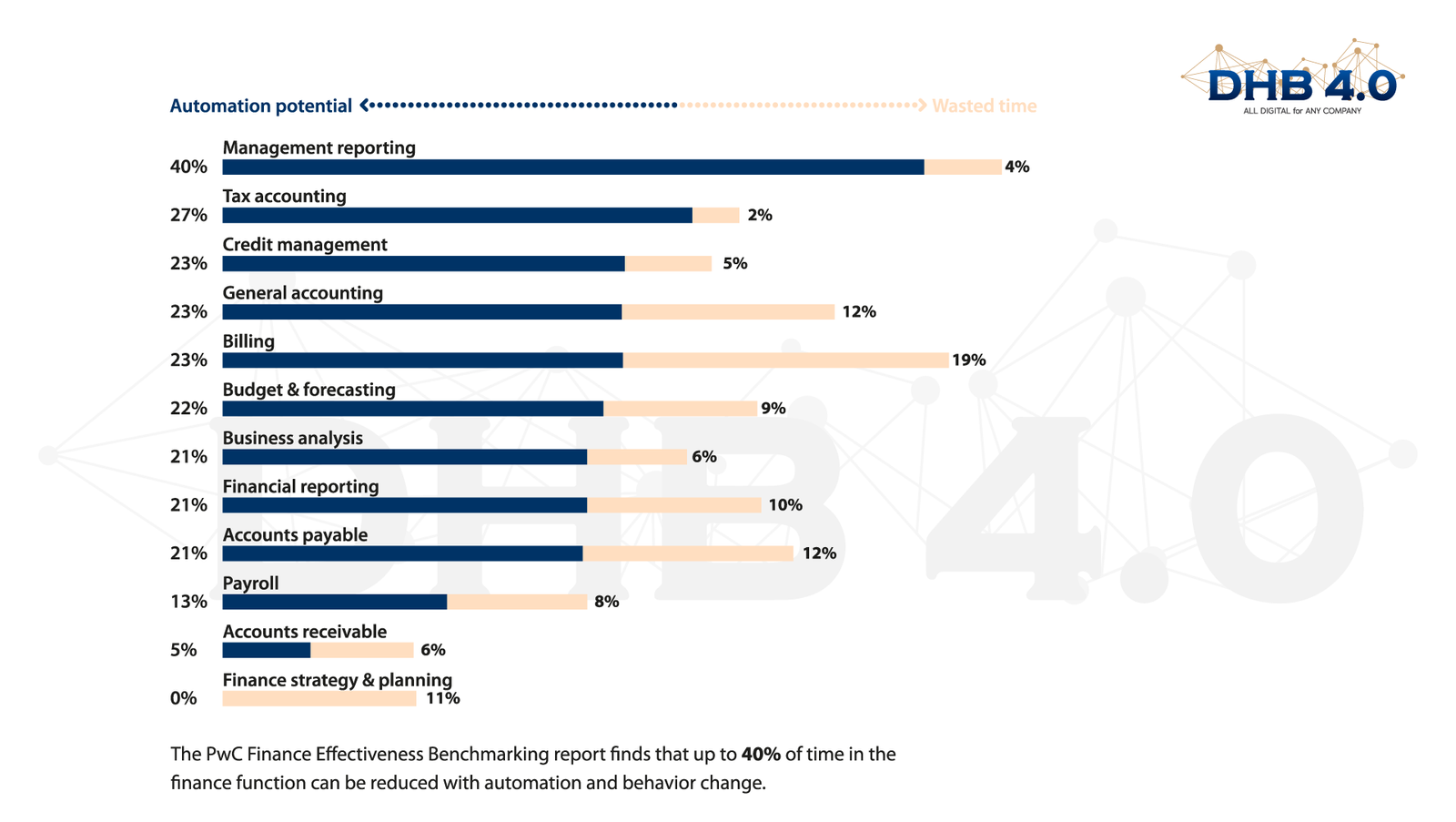
Potential value of automation
Companies across industries are experimenting with automation. Across all industries, 60% of line of business users agree that an inability to connect systems, applications and data hinders automation initiatives. One solution to reduce automation complexity is a better use of APIs. The research notes: "APIs are key to driving automation APIs have emerged as the most elegant means of scaling controlled access to a defined scope of data or functionality, abstracting the complexities of the underlying systems."

Process automation by industry
"In 2021, we'll see more and more systems be intent-based, and see a new programming model take hold: a declarative one. In this model, we declare an intent -- a desired goal or end state -- and the software systems connected via APIs in an application network autonomously figure out how to simply make it so." – Michael Machado, Senior Partner at FlexSim Brasil
TREND 5: API SECURITY
Eighty-four percent of customers are more loyal to companies that have strong security controls. Security is also a top enterprise technology investment. According to Verizon, 43% of data breaches this past year were the result of a web application vulnerability. Per Gartner, 90% of web-enabled applications will be more exposed to attack by API weaknesses than via the user interface. According to Gartner, by 2022, API abuses will be the most-frequent attack vector for enterprise web applications data breaches. Akamai reports that 83% of web traffic is now API traffic. There are 900 applications in an average enterprise.

Top technology investments for CIOs
TREND 6: MICROSERVICES
According to Flexsim Brasil: "Microservices expose data and functionality as a collection of loosely coupled services. With microservices, organizations can quickly adapt to changing customer requests and demands, as well as offer services that create a competitive edge." Ninety-one percent of organizations are using or plan to use microservices. Per Gartner, 65% of Financial services CIOs plan to increase spending on infrastructure technologies, such as microservices, APIs, and cloud in the coming year.
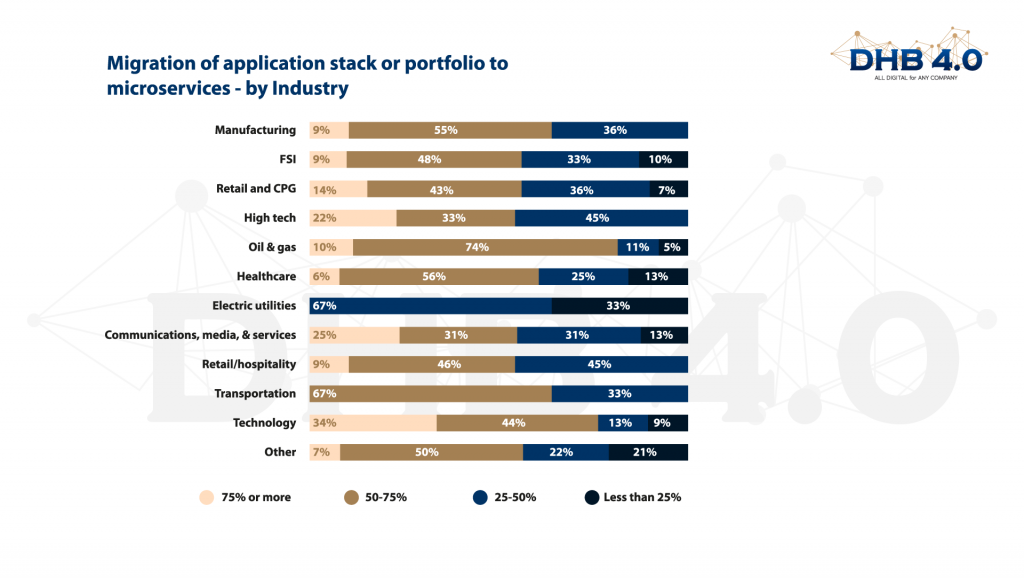
Microservices adoption is increasing across industries
Microservices adoption is increasing across industries. The research by Flexsim Brasil highlights several companies in multiple industries with tangible ROI because of microservice implementations. According to Gartner*, companies deploying microservices to production will require some form of service mesh capabilities to scale. A service mesh is an architectural pattern for microservices deployments. Its primary goal is to make service-to-service communications secure, fast, and reliable. Service mesh is still a new technology, but 46% of organizations are piloting it or have plans to evaluate or implement it in the next 12 months.
TREND 7: THE DATA DIVIDE
Businesses aren't living up to customer expectations of seamless and personalized experiences. Of the almost 900 different applications used by the average enterprise, only 28% of those applications are integrated -- preventing a single view of the customer. Per FlexSim Brasil, 72% of global consumers would consider changing service providers in response to receiving a disconnected experience. Also, 90% of organizations believe their revenue will be negatively impacted if they fail to complete digital transformation initiatives in the next 12 months.
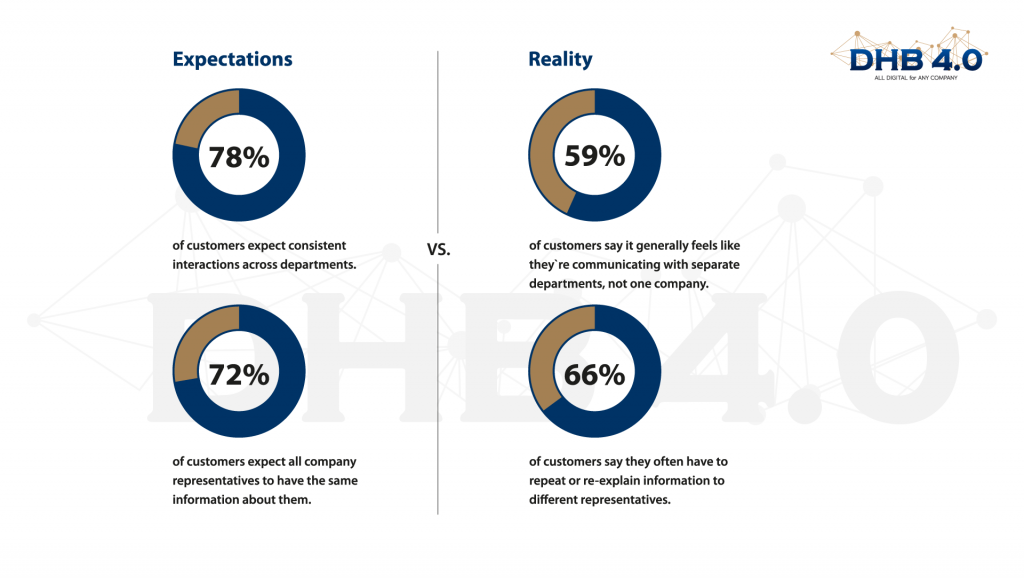
Customer expectations versus reality
"Integrating and unifying data across these systems is critical to create a single view of the customer and achieve true digital transformation. It's also the number one reason digital transformation initiatives fail. As the amount of systems and applications continue to grow exponentially, teams realize that key to their success -- and their organization's success -- is unlocking the data, wherever it exists, in a way that helps them deliver value faster." – Michael Machado, FlexSim Brasil.
TREND 8: DATA ANALYTICS
According to Forbes, 52% of executives report that having "a well-developed and designed enterprise data analytics effort enables us to deliver a superior customer experience. Also, 48% of organizations believe their revenue will be negatively impacted if they fail to complete digital transformation initiatives in the next 12 months. Per Gartner, 48% of product managers at growth companies, or companies that have seen positive revenue growth, are using analytics to collect and analyze customer perception and sentiment data. Gartner believes companies lose $15 million on average annual losses that poor data quality is believed to be responsible for.
An important 2020 lesson is that every business must be a digital business. And in the next normal, every business must be able to create value at the speed of need. The future of business will be automated and autonomous. The future of the enterprise is an autonomous enterprise.